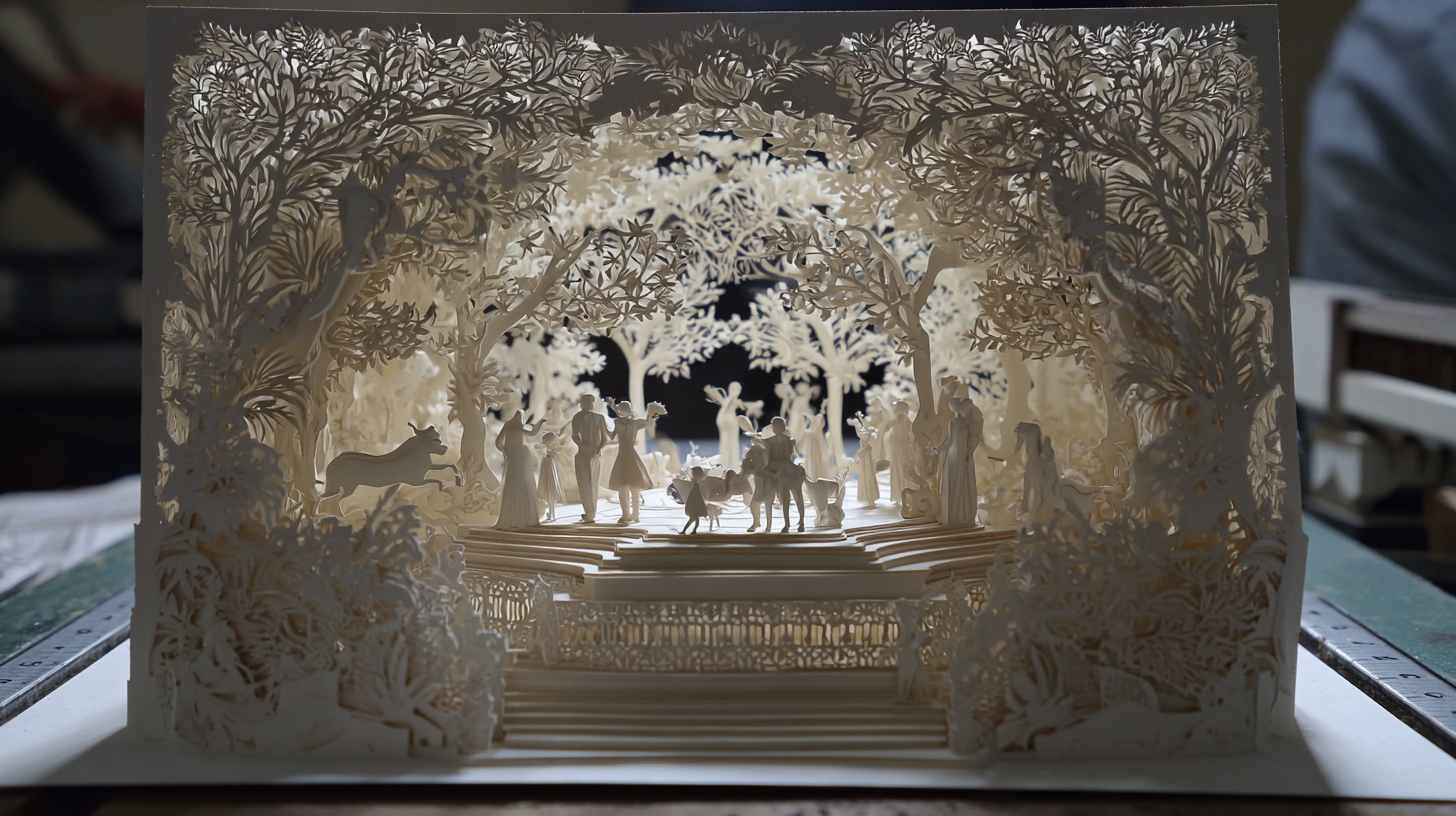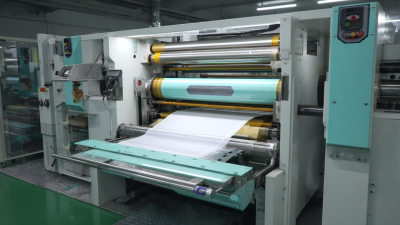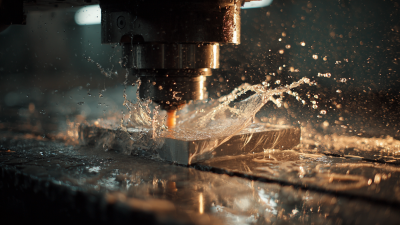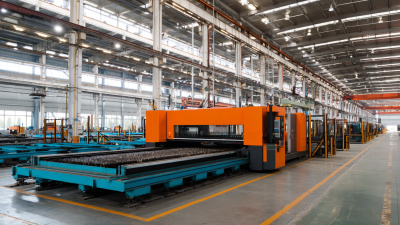
In recent years, the evolution of technology has significantly transformed the landscape of artistic design and production, particularly in the realm of paper crafting. The introduction of paper cutting CNC machines has revolutionized the industry, providing unparalleled precision and creativity in design execution. According to a report by Smithers Pira, the global market for CNC machinery is projected to grow from $68.09 billion in 2021 to $94.20 billion by 2026, highlighting the increasing adoption of advanced technologies such as paper cutting CNC machines. This surge in demand is driven by the need for efficiency and versatility in production processes, enabling artists and manufacturers to explore innovative methods of design and customization. As these machines become more accessible and feature-rich, they not only enhance creative possibilities but also streamline workflows, making them indispensable tools in modern design studios and production environments.

The evolution of CNC paper cutting technology has significantly transformed creative industries, fostering an environment where innovation and skill development thrive. Recent initiatives from labor development agencies have provided young creators with access to diverse tools, including CNC machines, enabling them to hone their skills and express their creativity. According to industry reports, the global CNC machine market is projected to reach over $100 billion by 2025, driven by advancements in automation and the increased demand for precision cutting in manufacturing and design.
As CNC technology continues to advance, it has become increasingly accessible for amateur creators and professionals alike. Programs that offer training in, for example, CNC machining not only equip individuals with technical skills but also encourage collaborative creativity and exploration of artistic possibilities. With a growing focus on this technology, research indicates that the demand for CNC cutting in creative sectors is expected to increase by 8% annually, highlighting the importance of staying ahead in this rapidly evolving field. This alignment of skill development and technological advancement is essential for fostering a new generation of creative professionals who can leverage these tools for innovative purposes.
| Dimension | Value |
|---|---|
| Max Cutting Area (mm) | 800 x 600 |
| Precision (mm) | 0.1 |
| Speed (m/min) | 20 |
| Material Compatibility | Paper, Cardstock, Thin Wood |
| Software Used | Vector-Based Software (e.g., Adobe Illustrator) |
| Typical Applications | Artwork, Greeting Cards, Prototyping |
| User Skill Level | Beginner to Advanced |
The rise of paper cutting CNC machines is transforming the landscape of paper craftsmanship and design. Automation in this field not only enhances precision but also significantly reduces production time. According to recent industry reports, the global market for CNC machines is expected to grow at a CAGR of 7.5% from 2023 to 2030, reflecting a broader trend towards automation in creative sectors. This evolution necessitates a reevaluation of traditional craftsmanship, as designers must adapt to incorporating these advanced tools into their creative processes.
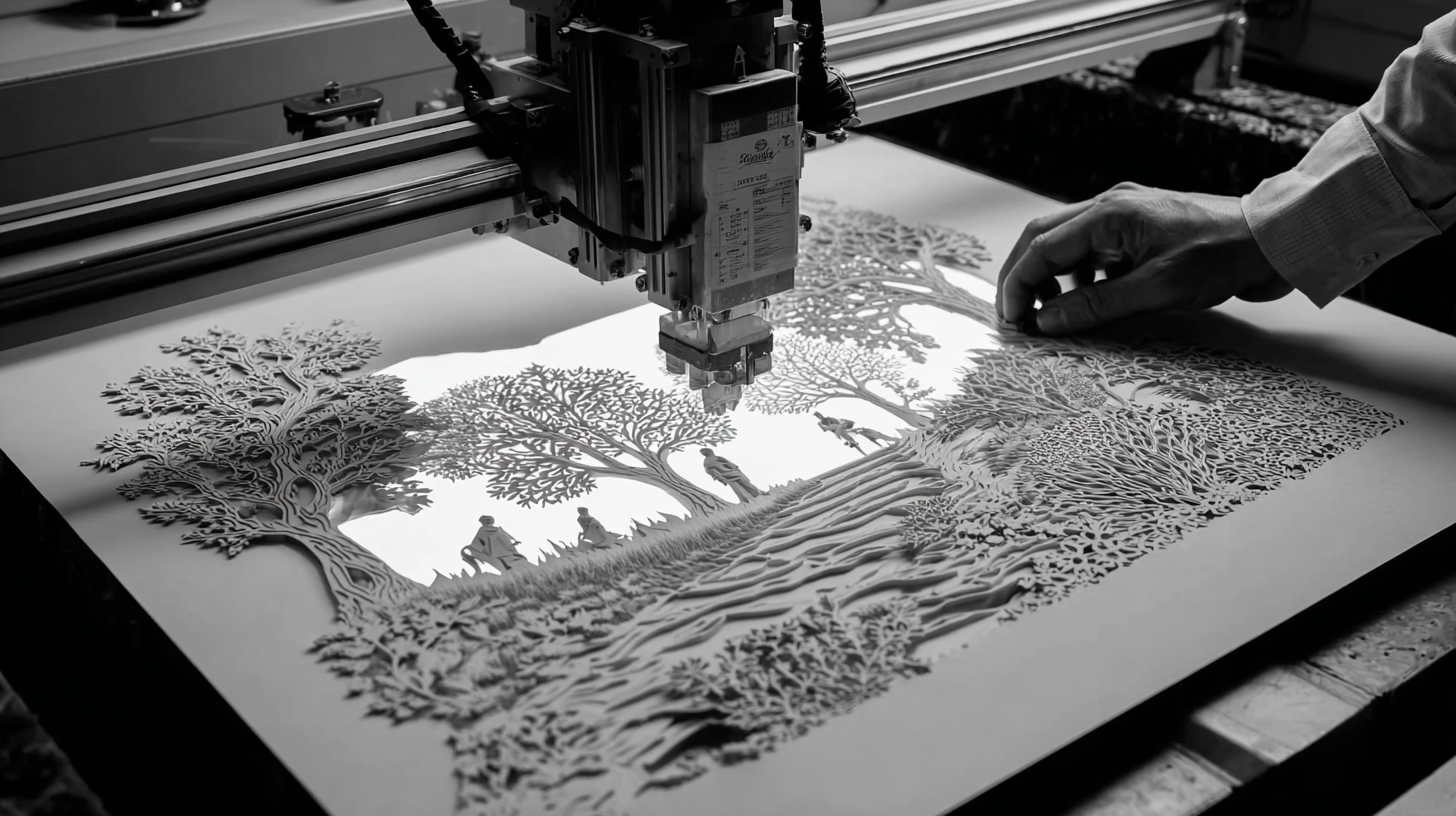
Tips for harnessing the power of CNC technology in your paper design projects include investing time in learning the software associated with these machines. Familiarizing yourself with design software can help you leverage automation to achieve intricate designs that were previously time-consuming or impossible to produce manually. Additionally, consider collaborating with local makerspaces or workshops that have CNC machines available for use, providing hands-on experience while contributing to a community of creatives.
As automation advances, it is crucial to understand its impact on job roles within the paper crafting industry. While some may fear job displacement, studies indicate that new technologies could create additional roles focused on design oversight and machine operation. Embracing these changes can enable artisans to evolve their skills and engage in a more dynamic and technologically equipped environment. Integrating AI with design processes is also expected to enhance creativity, allowing artists to push the boundaries of their work.
Modern CNC machines have revolutionized the art of paper cutting, unlocking new avenues for creativity. One key feature is their precision cutting technology, which allows artists to create intricate designs with flawless accuracy. The ability to program complex patterns enables creators to experiment with various shapes and forms, resulting in unique works of art that were previously difficult to achieve by hand. This precision not only enhances the visual quality of the finished pieces but also allows for more detailed and elaborate designs.
Another significant advancement is the integration of user-friendly software that simplifies the design process. With intuitive interfaces, artists can easily access design templates, customize their creations, and visualize the final product before cutting. This capability not only saves time but also encourages experimentation and innovation.
**Tip:** When using CNC machines for paper cutting, experiment with different materials to see how they interact with your designs. Different paper weights and textures can drastically change the outcome of your creative projects, so don’t hesitate to explore beyond standard options.
Additionally, many modern CNC machines offer features like laser engraving and 3D modeling, which expand the creative possibilities even further. By leveraging these technologies, artists can create multi-dimensional artworks and add depth to their paper cuttings, making them stand out in a competitive art market.
The market for CNC paper cutting machines has experienced remarkable growth in recent years, reflecting a broader trend towards automation and precision in manufacturing processes. According to recent statistics, adoption rates for CNC paper cutting solutions have surged by over 30% year-on-year, driven by industries that prioritize efficiency and quality. This technology has become increasingly accessible, with advancements reducing costs and enhancing user-friendliness, allowing small businesses and artisans to leverage the power of CNC machines.
Furthermore, the versatility of CNC paper cutting machines contributes significantly to their market appeal. They are utilized across various sectors, from packaging and advertising to arts and crafts. Recent surveys indicate that nearly 60% of businesses integrating these machines have reported an increase in production capacity and creative output. As the industry continues to evolve, forecasts suggest sustained growth, with an estimated market expansion of 15% annually over the next five years, highlighting the ongoing trend towards personalized and intricate paper designs driven by innovative CNC technology.
The chart above illustrates the market growth percentage for CNC paper cutting solutions from 2018 to 2023. As seen, there is a consistent upward trend in adoption rates, reflecting a growing interest and investment in these technologies.
The integration of CNC (Computer Numerical Control) technology in the paper cutting industry is revolutionizing the art, design, and packaging sectors. By enabling precise and intricate designs, CNC machines are now capable of transforming a simple sheet of paper into stunning visual art pieces and functional design elements. Artists are using advanced CNC techniques to explore new creative territories, allowing for detailed layering and complex geometries that were previously time-consuming or impossible to achieve manually.
In the packaging industry, CNC paper cutting is redefining product presentation. Custom packaging designs that incorporate unique shapes and intricate patterns enhance brand identity and consumer engagement. Companies are leveraging these innovative applications not only to stand out in a competitive market but also to create sustainable packaging solutions. The ability to efficiently produce small batches of bespoke packaging through CNC technology allows for rapid prototyping and a reduction in waste, aligning with contemporary eco-conscious business practices.
